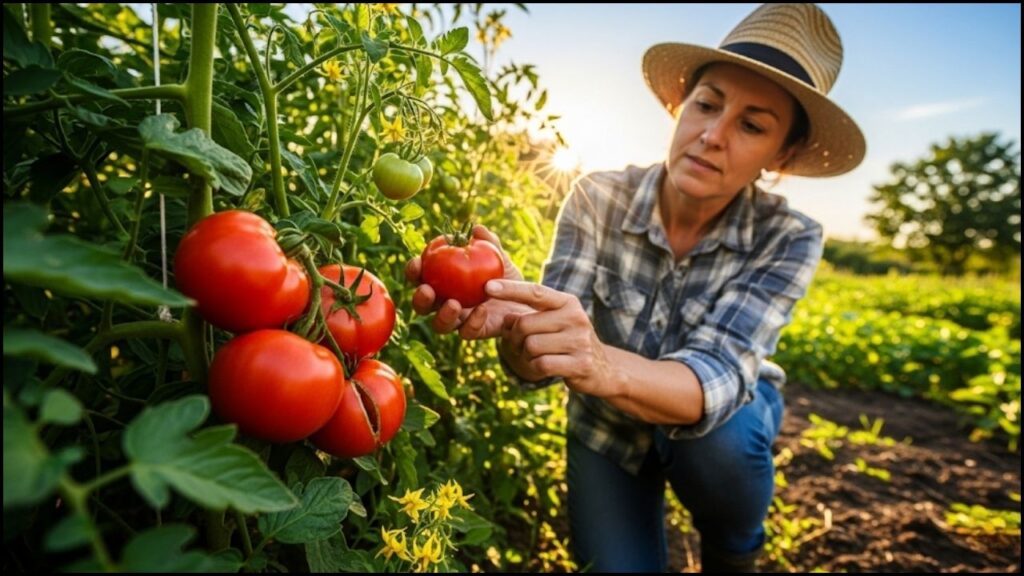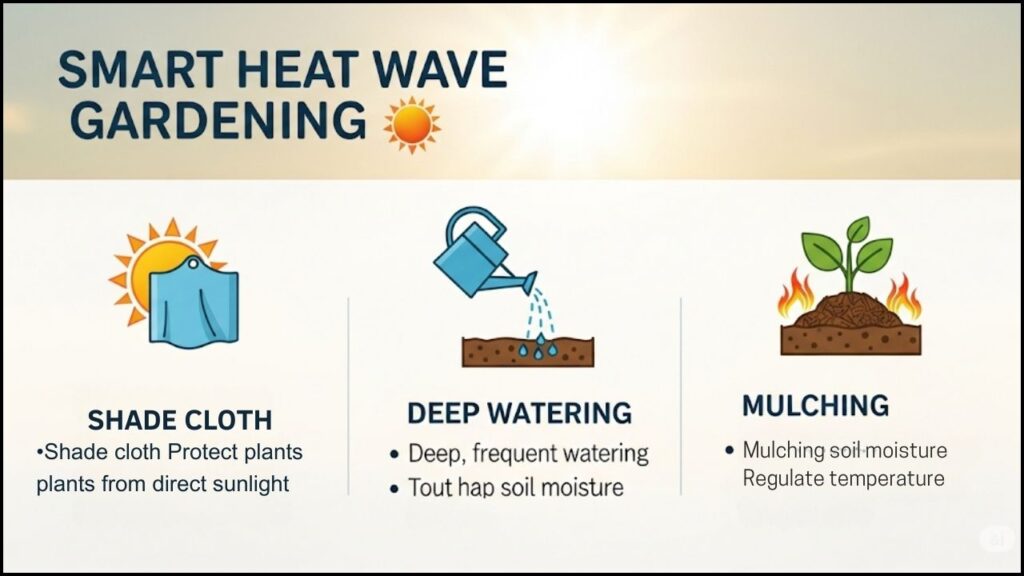As summer temperatures surge and heat waves become more frequent globally, home gardeners face a critical decision. Horticulturalists and agricultural extension experts from across the country have reached a clear consensus: the best strategy is to harvest your veggies before a heat wave arrives. This proactive step can mean the difference between a bountiful crop and a garden damaged by heat-induced stress.

Key Takeaways: Heat Wave Gardening Strategy
| Key Finding | Expert Explanation |
| Expert Consensus | Overwhelmingly, experts advise harvesting most ripe and near-ripe produce before temperatures spike. |
| Reason: Plant Stress | Extreme heat forces plants into survival mode, causing them to abandon fruit production, which leads to poor flavor, texture, and growth. |
| Most Vulnerable Crops | Leafy greens (lettuce, spinach), tender herbs, tomatoes, and cucumbers are highly susceptible to heat damage and quality degradation. |
| Crops That Can Wait | Root vegetables (carrots, potatoes) and hard-skinned squash are better insulated and can often remain in the ground with proper care. |
The Overwhelming Consensus: Pick Now, Not Later
When facing forecasts of temperatures soaring above 85-90°F (30-32°C), gardeners should act decisively. Experts from university agricultural programs and seasoned farmers consistently advise harvesting produce that is ripe or nearly ripe. The scientific reasoning behind this advice is rooted in understanding plant stress.
“A plant’s primary goal during extreme heat shifts from producing high-quality fruit to simply surviving,” stated Dr. Amelia Walsh, a horticulturist at the National Center for Atmospheric Research (NCAR). “Physiological processes change. The plant will divert energy away from ripening fruit to conserve water and protect its core systems. Harvesting beforehand ensures you get the produce at its peak vegetable quality.”
Extreme heat pushes plants beyond their optimal temperature range, triggering a cascade of defensive measures that are detrimental to the harvest.
How Extreme Heat Degrades Your Vegetables
The damage caused by a heat wave can manifest in several ways, depending on the type of vegetable. Understanding these impacts highlights the importance of an early harvest.
Bolting and Bitterness in Leafy Greens
- Cool-season crops like lettuce, spinach, and arugula are particularly sensitive to heat. High temperatures are a biological signal for these plants to “bolt”—rapidly produce a flower stalk to create seeds before the plant dies. This process turns the leaves unpleasantly bitter and tough.
- “Bolting is a survival mechanism,” a guide from the Cornell University Cooperative Extension explains. “Once it begins, the edible quality of the leaves is essentially lost. Harvesting all mature heads of lettuce before the heat is the only way to guarantee a usable crop.”
Damage to Tomatoes, Peppers, and Cucumbers

- Fruiting vegetables face a different set of challenges. When temperatures consistently exceed 90°F (32°C), many tomato and pepper plants will drop their blossoms to conserve energy, halting future fruit production.
- Existing fruits also suffer. Tomatoes can stop producing lycopene and carotene, the pigments responsible for their red color, resulting in yellowish, unevenly ripened fruit. The texture often becomes mealy or soft. Cucumbers and summer squash can develop a bitter taste and tough skins as the plant struggles to manage water loss. Furthermore, direct, intense sunlight can cause “sunscald,” creating white, papery blotches on the skin of peppers and tomatoes.
A Guide to What to Harvest and What to Leave
While the general rule is to harvest, not all vegetables require the same urgent attention.
Harvest Immediately
- Leafy Greens: All lettuce, spinach, chard, and arugula that are of a usable size.
- Tender Herbs: Basil, cilantro, dill, and parsley will quickly wilt or bolt.
- Tomatoes: Harvest all ripe fruit and any that have begun to show color (the “breaker stage”). These will continue to ripen indoors without losing significant flavor.
- Cucumbers, Zucchini, and Beans: Pick any that are of a suitable size, as heat can make them woody or bitter.
- Broccoli and Cauliflower: Harvest any mature heads immediately, as heat will cause them to flower and become bitter.
What Can Often Wait (With Protection)
Some crops are better equipped to handle the heat, primarily those whose edible parts are protected underground.
- Root Vegetables: Carrots, potatoes, and beets are insulated by the soil. However, the soil must be kept consistently moist to prevent them from becoming stressed and woody.
- Winter Squash and Pumpkins: Their thick skins provide significant protection from sunscald and moisture loss.
- Corn: If well-watered, corn can tolerate heat, but extremely high temperatures can interfere with pollination, leading to ears with missing kernels.
Protecting the Plants That Remain
After harvesting vulnerable produce, the focus shifts to protecting the plants themselves to ensure they survive and resume production once temperatures cool. Heat wave gardening requires a few key defensive measures:
- Water Deeply and Early: Water plants thoroughly in the early morning. This allows the water to penetrate deep into the soil before the sun’s heat can cause rapid evaporation and ensures the plant is hydrated before the hottest part of the day.
- Provide Shade: Use shade cloth, old bedsheets, or umbrellas to create filtered sunlight for sensitive plants, especially during the afternoon. A 30-50% shade cloth is ideal as it reduces sun intensity without blocking all light.
- Use Mulch: Apply a 2-3 inch layer of organic mulch (such as straw, shredded leaves, or wood chips) around the base of your plants. Mulch insulates the soil, keeping the root zone cooler and significantly reducing water evaporation.
As climate patterns continue to shift, adapting gardening strategies has become essential. Proactively harvesting before a heat wave is no longer a niche tip but a standard practice for successful gardeners looking to preserve the quality and yield of their efforts.
It’s Time to Pick Your Butternut Squash: 3 Signs It’s Definitely Ready to Harvest
